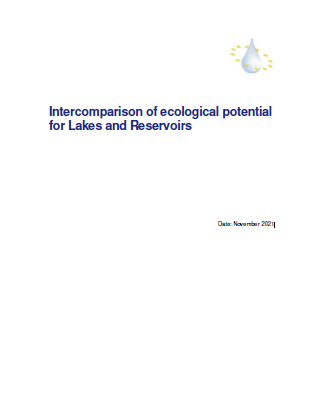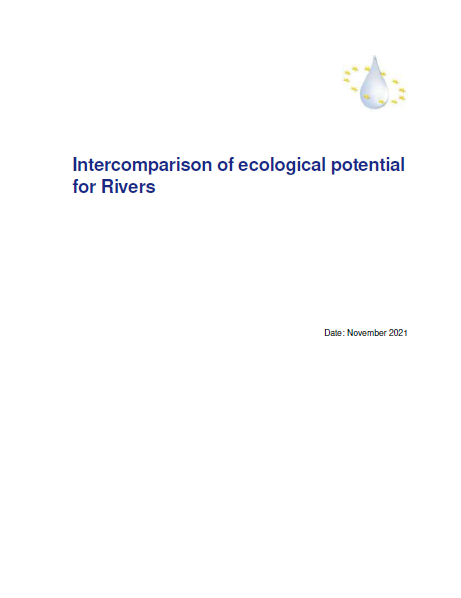Cleveringa, J., Kampa, E., 2021. Intercomparison of ecological potential for Transitional and Coastal waters (TraC). Amersfoort, Berlin: Arcadis, Ecologic Institute.
- Sprache
-
Englisch
- Autorenschaft
-
Jelmer Cleveringa
- Finanzierung
-
Europäische Umweltagentur (EUA), International - Verlag
-
Arcadis Nederland, Niederlande Ecologic Institut, Deutschland - Jahr
- Umfang
- 84 S.
- Projekt
- Projekt-ID
- Inhaltsverzeichnis
-
Gesamtes Inhaltsverzeichnis
1 Introduction
1.1 Aims of intercomparison of ecological potential of HMWB in all water categories
1.2 Aims of intercomparison for TraC heavily modified water bodies (compared to water categories Rivers, Lakes/Reservoirs)
1.3 Delineation of TraC waters and relation to HMWB designation and common physical modifications for TraC HMWB
1.4 Purpose and scope of this report
1.5 Structure of report
2 Questionnaire on intercomparison of ecological potential for TraC HMWB
2.1 Scope of questionnaire
2.2 Structure of intercomparison questionnaire for TraC
2.3 Responses from European countries
3 Overview of methods for definition of ecological potential in TraC HMWB
4 Examples/case studies on intercomparison of ecological potential for TraC
5 Addressing the steps of CIS Guidance no. 37 for ecological potential definition
5.1 Pre-Step: Designation of HMWBs
5.2 Steps for definition of MEP/GEP & implementation of measures to achieve GEP
5.2.1 Overview of step equivalence in methods
5.2.2 Challenges on the use of specific steps
6 Lessons learned by countries on the use of their methods
7 Intercomparison discussion on the definition of ecological potential for TraC
7.1 Discussion
7.2 Conclusions and recommendations
8 References
9 Annex 1: TraC HMWB examples/cases
9.1 Croatia - Coastal Water Body Split Harbour (O313-STLP)
9.2 Denmark
9.3 Finland
9.4 Malta
9.5 Netherlands
9.6 Lithuania
9.7 Spain (Basque)
10 Annex 2: Original country responses per step
10.1 Step A. Identification of the closest comparable water category
10.2 Step B1. Identify mitigation measures relevant to each of the hydromorphological alterations and ecologically effective in the physical context of the water body
10.3 Step B2. Exclude mitigation measures with significant adverse effect on use or wider environment
10.4 Step B3. Select most ecologically beneficial (combination of) measures taking into account need to ensure best approximation to ecological continuum
10.5 Step C. Derivation of hydromorphological conditions for MEP
10.6 Step D. Derivation of physico-chemical conditions for MEP, taking into account the closest comparable water body type 65
10.7 Step E. Derivation of BQE conditions for MEP
10.8 Step F. Derivation of BQE conditions for GEP
10.9 Step G. Derivation of supporting quality element conditions for GEP
10.10 Step H. Identification of mitigation measures for GEP
10.11 Monitoring to assess whether GEP is being achieved
10.12 Are there GEP measures that are disproportionally expensive or infeasible?
10.13 Implement GEP measures and monitor effects on BQEs and supporting quality elements
10.14 Description of method in case of no equivalent steps to CIS no. 37.
10.15 Lessons learned, strengths and weaknesses
11 Annex 3: Blank intercomparison questionnaire for TraC HMWB - Schlüsselwörter
Kampa, E., Rouillard, J., 2021. Intercomparison of ecological potential for Rivers. Berlin, Ecologic Institute.
Wolfram, G., Konecny, R., Kampa, E., 2021. Intercomparison of ecological potential for Lakes and Reservoirs. Vienna, Berlin: Environment Agency, DWS Hydro-Ökologie, Ecologic Institute.

